There are lots of methods for feeding a sourdough starter. Each baker has his or her own way. But: feeding your starter grapes? Once I heard this idea, I had to try it. Here’s what happened.

Google around for how to find a sourdough starter, and you’ll see a lot of opinions. You can get a starter from a friend (or a local bakery) or buy a starter online. If you’re adventurous, you might grow your own. (This post from almost a year ago lists a bunch of the possibilities.)
Because sourdough starters are, fundamentally, just a mixture of flour and water and air, making your own is totally doable–but not without some difficulty. That’s why many bakers have found little helps to accelerate activity and simplify the process. One example: feeding a sourdough starter green grapes.
Why Grapes
Grapes, with their skin naturally seductive to wild yeast, have been said to accelerate sourdough starter activity. As PJ Hamel writes at the Flourish blog of King Arthur Flour, “Wild yeast floating in the air will collect on grape skins. So legend has it that burying wild grapes in flour will transfer some of that wild yeast to the sourdough starter you make with the flour.”
The Question: What Happens When You Try Feeding a Sourdough Starter Green Grapes?
While grapes are typically something used to create a new starter, the thought occurred to me that what grows a fledging starter should also grow an active one. What would happen, I wondered, if I fed my currently happy, active #VitaletheSourdoughStarter a handful of grapes with his normal weekly flour/water dose?
I decided to try.
The Test: Feeding a Sourdough Starter with a Bonus 8 Green Grapes
The experiment started last Wednesday. I pulled my jar of starter out of the fridge, and split it equally between two jars (70 grams in each jar). Then I fed each one the same amount of flour (30 grams) and water (30 grams); however, into one, I also dropped eight halved green grapes.
I marked both jars with rubber bands. I marked the jar including grapes with a small note. Then, I waited.
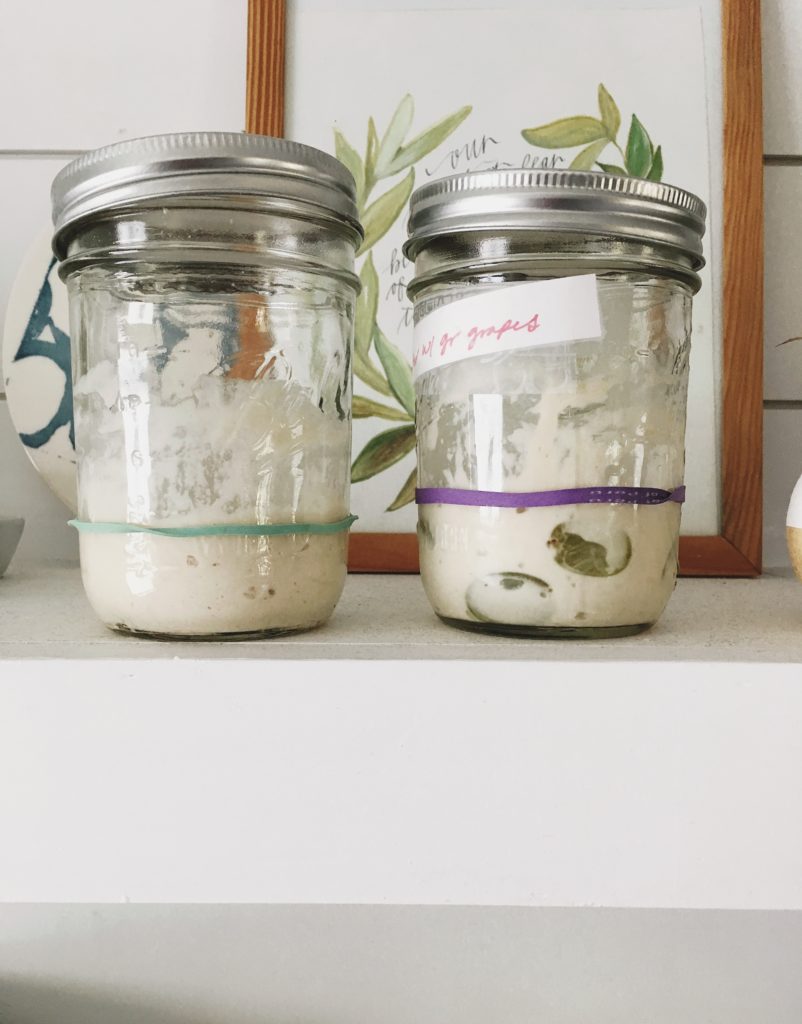
The First Result: Matching Growth for 16 Hours
For the next half a day, I left the jars alone. Here is what I noted:
- Three hours in, they had similar activity, with slightly faster growth in the grapeless jar.
- Eight hours in, both were still rising, with growth about matched.
At this point, it was late. I went to bed. In the morning:
- Sixteen hours in, they had both already peaked and were beginning to fall. (See below photo). The grape starter was higher, but only slightly.
Conclusion: At this point, adding grapes didn’t seem to have made a huge difference. Both starters were similar and stable.
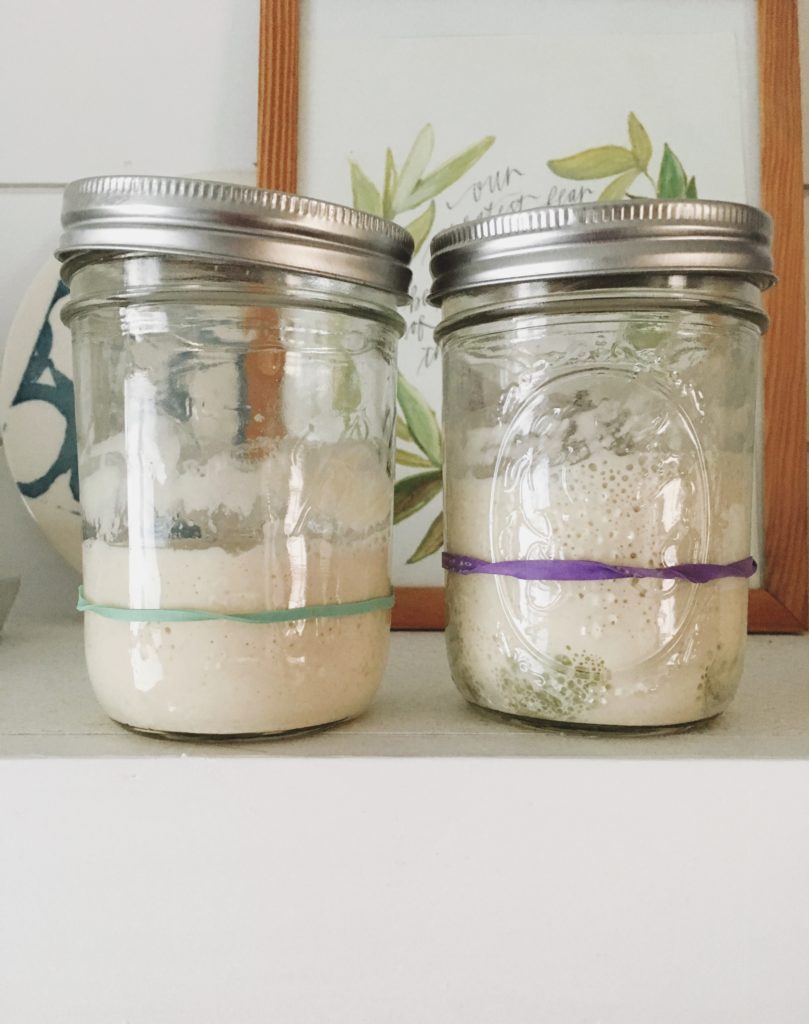
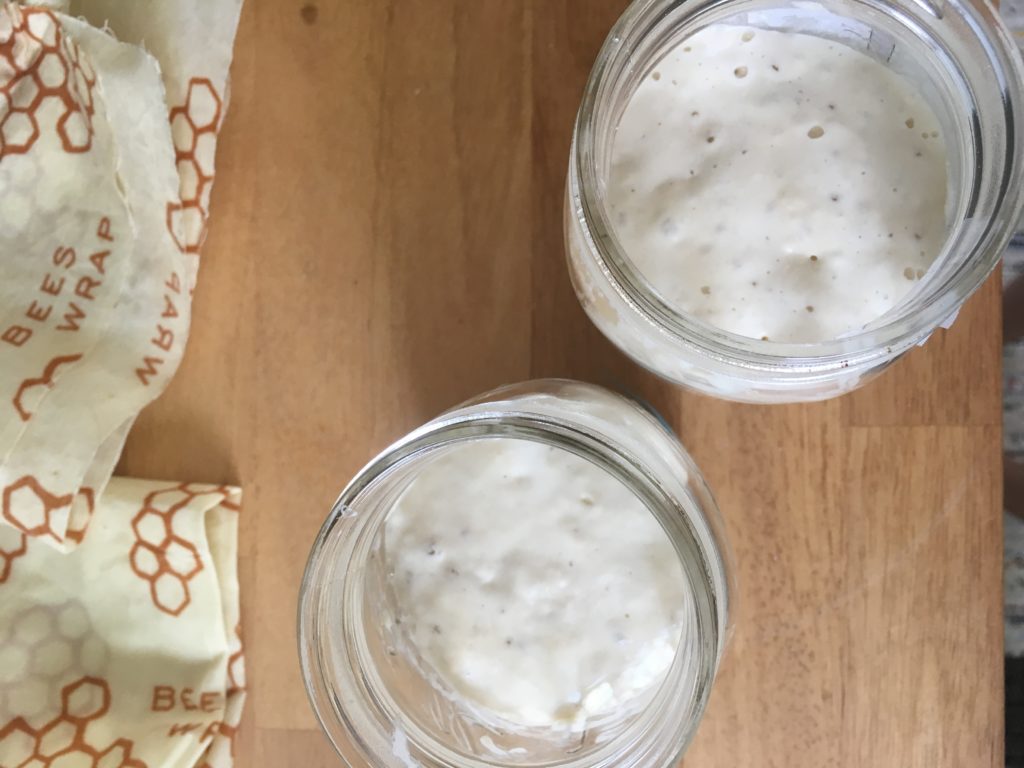
Fun Discovery: Feeding a Sourdough Starter Grapes Jumpstarts a Levain
For the sourdough bread recipe I use most often, the first step to baking is always to build a levain (a word used, in this case, to mean sort of a preferment). To do this, I usually pull my starter out of the fridge, add 25 grams of starter to a fresh jar and feed it 65 grams of flour and 65 grams of water. This jar goes on the counter for four to eight hours or, until doubled.
So. Now that I had two starters, each of which seemed to be behaving similarly, I wanted to see what, if anything, would differ if I used them in matching levains. Would one grow faster or higher? Would they remain the same?
Given how the first experiment had gone, I didn’t expect much.
I created two jars: one made with the original sourdough starter and one made with the new, grape one. So what happened next surprised me.

As the picture above demonstrates, when used in a levain (or preferment), the jar with the grape starter grew significantly higher. (The blue tags mark starter height at 6:45 a.m., which more than doubled by lunch time, particularly in the grape jar.)
Below is a closer look, as posted in Insta Stories last Wednesday:

At this point, the only test left to perform was using the levains in baking. The rest of the afternoon, I prepped two twin batches of bread, one with the grape levain and one with the grapeless levain.
By evening, I had prepared two loaves and four balls of pizza dough, half built from the grape starter and half from the grapeless one.
Friday, I made pizza; Saturday, I baked bread.
Here are the results:
How the Starters Compared in Pizza
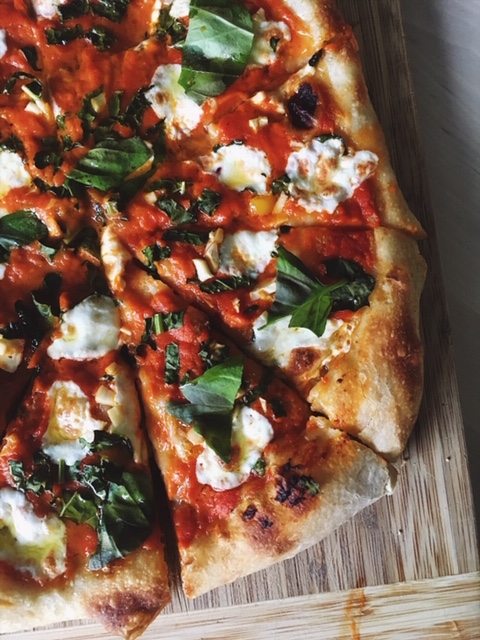
On Friday night, both pizzas were the usual chewy, firm magic we’re used to with sourdough–but the one made with a grape starter stood out for a few reasons:
- The dough had more and larger holes
- The finished crust had bigger air pockets
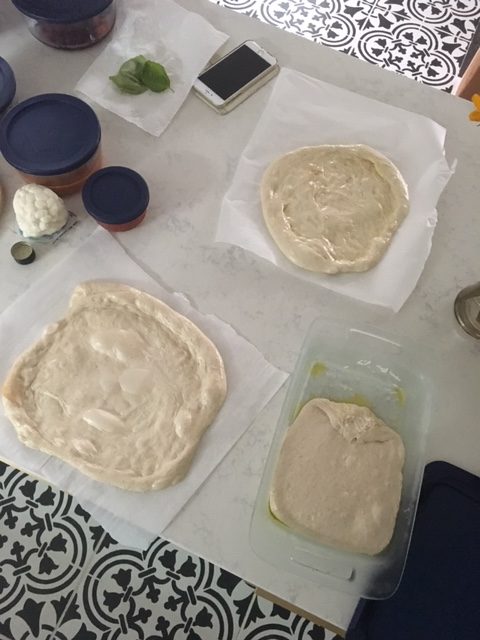
Given that this was only a one-time, low-detail test, I made this loose conclusion: feeding a sourdough starter grapes will boost activity enough to impact your dough–impressive!
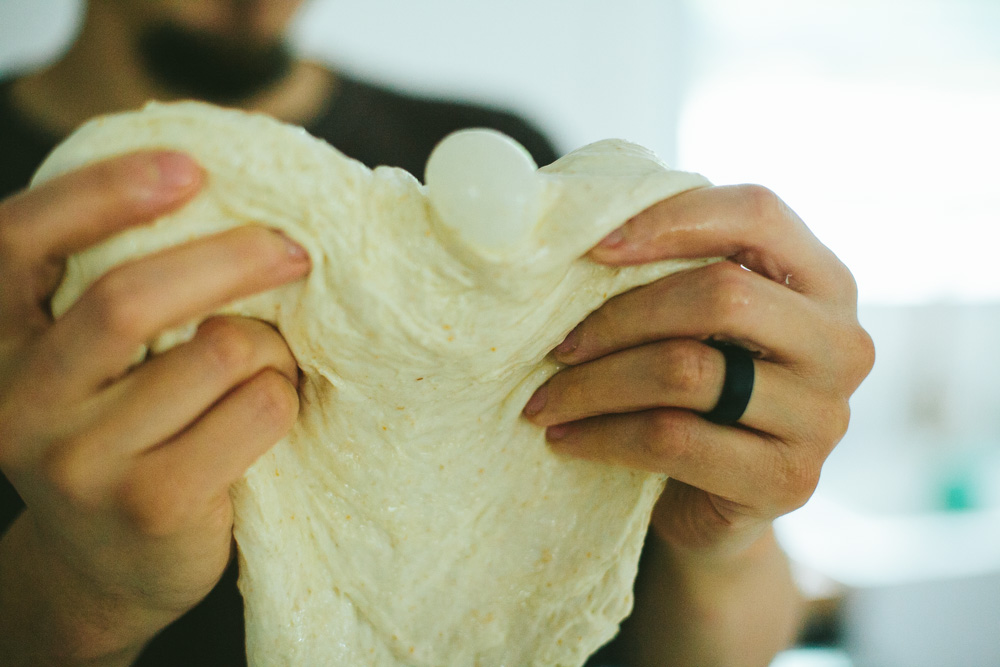
How the Starters Compared in Bread
Last but not least, I baked one loaf of bread from each batch of dough — one loaf from the original grape starter and one made from the grapeless one.
Disclaimer: I also played around with hydration levels, upping the percentage of water, so my resulting loaves are flatter than usual. That said…

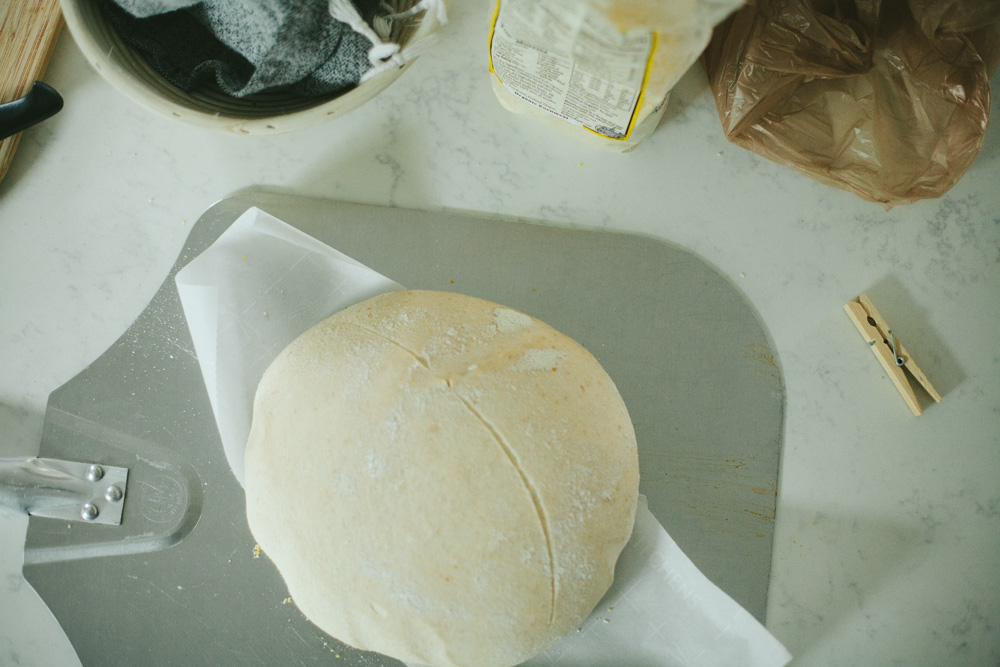

The bread made from the grape starter did indeed grow higher than the other. While both breads were flatter than usual because of higher hydration, they did not look identical. Using grapes did create a higher rise.
Conclusion: Per this simple, one-time test, there’s reason to believe adding grapes to a sourdough starter will boost activity!
Try It Yourself!
Given that I now have two, not one, jars of starter sitting in my fridge, I’ll probably play around with the grape starter more in the future. I’m also curious to see how long the grapes boost activity; won’t they eventually dissolve?
I’d also love to hear from you if you do or have tried it. Message me anytime here!



One thought on “Feeding a Sourdough Starter Grapes: an Experiment”
Comments are closed.